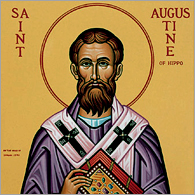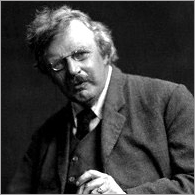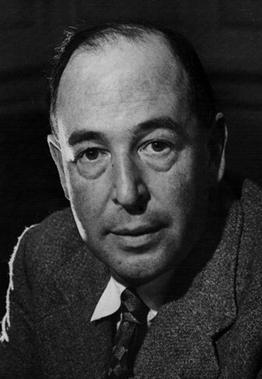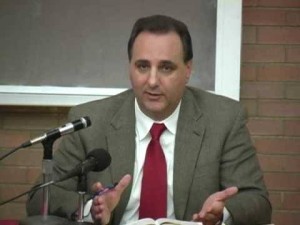 In my last two blog installments in the new geocentrism series, “Pay No Attention the Geocentrist Behind the Curtain” and “The New Geocentrists Come Unravelled”, I documented numerous instances in which Bob Sungenis has advanced falsehoods, exaggerations, blunders, and egregious errors in his zealous but flawed defense of his private dogma, geocentrism.
In my last two blog installments in the new geocentrism series, “Pay No Attention the Geocentrist Behind the Curtain” and “The New Geocentrists Come Unravelled”, I documented numerous instances in which Bob Sungenis has advanced falsehoods, exaggerations, blunders, and egregious errors in his zealous but flawed defense of his private dogma, geocentrism.
This panoply of errors illustrates that, in spite of the very good work Sungenis has done in the past in other areas, it’s a serious mistake to take any assertion he makes in this area at face value. One must always carefully check his “facts” and sources because he’s become so habitually tendentious and sloppy.
For the sake of anyone confused or troubled by it—or for anyone who finds the actual history to be as surprisingly interesting as I did—this essay will get to the bottom of an assertion that Sungenis has been throwing around for years, namely, that the only view of the universe permitted to a Catholic is that the earth is the immovable center of the universe and that everything else in the universe revolves around the earth. Any other view, he claims, falls under the Church’s condemnation to this very day. Sungenis would have everyone believe that all indications to the contrary are legally invalid and the result of incompetence, malfeasance, or subterfuge on the part of the hierarchy—in short, part of yet another grand conspiracy. So let’s discover the real story.
Certainly such a sweeping claim demands some significant evidence to back it up. Anybody would want to see a number of authoritative citations from competent authorities before believing such a claim. So, what does Sungenis produce? Here’s how he presents it:
The solidity of Benedict XIV’s 1758 approval of the acts of the Sacred Congregation in continuing the ban on Copernicanism was confirmed with legal overtones when French astronomer, Joseph Lalande, while visiting Rome in 1765, attempted to have Galileo’s Dialogo taken off the Index by Lalande’s citing the fact that the 1758 Index had withdrawn the general ban on books about Copernican cosmology. The head of the Congregation of the Index promptly told Lalande that since the prohibition against Galileo and his Dialogo was precipitated by a canonical trial, the sentence pronounced against Galileo would first have to be revoked in order for any lifting of the prohibition to occur.
The importance of this canonical protocol cannot be underestimated [sic]. If the head of the Congregation of the Index indeed spoke truthfully for the Church on this matter, he informs us in no uncertain terms that for any rehabilitation of either Galileo or his heliocentric theory to occur, a formal and legal reversal of his sentence and condemnation would first have to take place, either by the then present magisterium or any future magisterium. If there is no subsequent formal and legal exoneration of Galileo, then, according to the canonical protocol of the Catholic Church, Galileo and his heliocentric theory remain condemned to this very day. Since the Church has not initiated any official, formal or legal rescission of Galileo’s condemnation, it remains legally in force. (Galileo Was Wrong, vol. 2 [GWW2], p. 240)
Then (skipping forward) Sungenis ratchets up his claims:
Earlier we learned of the incident that occurred in 1765 when French astronomer Joseph Lalande sought to have Galileo’s name removed from the Index. He was told by the head of the Congregation of the Index that no such removal was possible until the sentence given to Galileo at the trial of 1633 was formally and officially rescinded. The importance of this canonical protocol cannot be underestimated [sic]. If there is no legal exoneration of Galileo, then, according to canon law, Galileo and his heliocentric theory remain condemned to this very day, and thus, the removal of Galileo’s name from the 1835 Index was both premature and inconsequential. Since the Church, to this very day, has not initiated any official, formal or legal rescission of either the condemnation against heliocentrism or against Galileo personally, both remain in force, regardless of whether his name was taken off the 1835 Index. An Index can revise an Index, but an Index cannot reverse or revise the results of a canonical trial. The only thing accomplished by removing Galileo’s name from the Index while keeping the results of his trial in force is the creation of a glaring contradiction in the ecclesiastical record. (GWW2, 264-5)
This claim is made in various forms no less than six times in GWW2. And it is repeated in at least six other essays from Sungenis himself [see here]. (Unsurprisingly it has also been picked up by others, see e.g. here and here.)
Twice in GWW2 Sungenis insists that the “importance of this canonical protocol cannot be underestimated” — a sentiment with which I would readily agree, although he probably meant to say “overestimated”. But observe how he stealthily but systematically ratchets up the certainty with which he makes his unproven claims throughout the book. He starts with a mere personal conjecture — and a dubious one at that — “if the head of the Congregation of the Index spoke truthfully for the Church on this matter…” Certainly, the Cardinal Prefect presumably spoke truthfully, but the problem is that given the nature of his office he was in no position to speak “for the Church on this matter.” Then Sungenis builds an entire edifice on this dubious conjecture that evolves into what he eventually describes as being “according to the canonical protocol of the Church” and yet further evolves into the unqualified “according to canon law” (it seems that Sungenis is an evolutionist of his own sort).
In a similar vein, a private conversation is transmogrified into “the Congregation of the Index had already gone on record”. He then treats these gross exaggerations as established facts to support charges of actual malfeasance: “there exists, however, an even more egregious commission of fault on the part of Gregory XVI’s Index” (GWW2, p. 265) and “the removal of Copernicus and Galileo from the 1835 Index of Gregory XIV . . . was made under false pretenses” (GWW2, p. 289).
The fact is that, even if we assumed that Sungenis had gotten his source right, he’s still faced with the following problems. A hearsay report of a private conversation between a layman and a prelate in Rome is light-years away from the sort of official, authoritative source that he would need to establish his case. And even in his official capacity the head of the Congregation of the Index would be incompetent to issue an authoritative ruling on this matter. Thus, even if this source said everything that Sungenis claims, it would be totally inadequate to establish his case. I said in another essay that Sungenis’s claim was a mere “unproven assertion” and that’s exactly what it is.
A Closer Examination of the Lone Source
 But the troubles multiply for Sungenis. Over the years he’s had innumerable difficulties handling his sources in a responsible and scholarly way (see here, here, and here). So I decided to look further into this matter. Here’s what I found.
But the troubles multiply for Sungenis. Over the years he’s had innumerable difficulties handling his sources in a responsible and scholarly way (see here, here, and here). So I decided to look further into this matter. Here’s what I found.
Sungenis claims twice in GWW2 that he is citing Maurice Finocchiaro’s book Retrying Galileo on this matter “verbatim” (pp. 240n790 and 264n843.) But what he presents are not the verbatim words of Finocchiaro. He presents instead an expanded paraphrase containing glosses that go well beyond what Finocchiaro said. Sungenis has been chided in the past for putting quotation marks around words that were not actually stated by another—and obviously this would apply a fortiori when explicitly claiming that something is being cited “verbatim”. As Sungenis seems to struggle with the concept, permit me to present the definition of “verbatim”: “corresponding word for word to the original source or text” (source).
Sungenis’s long history of source problems, coupled with these new discrepancies, led me to skip all of his glosses and paraphrases and go straight to the original source, Lalande.
The first gaff I encountered is that Sungenis has mis-cited this source (something of a habit for him, link). Finocchiaro accurately cites the 1771 edition of Lalande’s work, but Sungenis incorrectly cites the 1764 edition. The error might have been avoided if he had noticed that even he correctly stated that Lalande went to Rome in 1765 and so, obviously, could not have spoken of that trip in 1764. I think from this and what follows, it is clear that Sungenis never looked up this primary source. Here is what Lalande actually wrote:
On a supprimé dans la derniere édition de l’Index, eu catalogue des livres défendus, faite à Rome, l’article qui comprenoit tous les livres où le movement de la terre est soutenu; je demandai étant à Rome en 1765, que l’on voulût bien en retrancher aussi nommément les ouvrages de Galilée; le Cardinal Préfet de la Congrégation de l’Index, m’objecta qu’il y avoit contre lui une Sentence de la Congrégation du S. Office ou de l’Inquisition, qu’il faudroit auparavant faire modifier, & le Pape Clément XIII, que nous venon de perdre, me paroissoit très-porté à y consenter, par deference pour les sciences & les savans, mais le temps ne me permit pas de suivre une negotiation qui dépendoit d’un tropgrand nombre de personnes. (source)
Removed in the last edition of the Index, the catalog of the forbidden books, made in Rome, was the article which consists of all the books where the movement of the earth is maintained. Being in Rome in 1765, I asked whether one might not remove also by name the works of Galileo. The Cardinal Prefect of the Congregation of the Index responded to me that there was against it [him] a sentence of the Congregation of the Holy Office (or of the Inquisition) that it would be necessary beforehand to revise, and Pope Clement XIII, whom we have just lost, was quite willing to agree to, out of deference for the sciences and scientists. But time did not permit me to pursue a negotiation which would depend on a significant number of people (my translation).
Now that we have Lalande’s actual words before us, several important details emerge. First, notice again that this is an account of a private conversation—the Cardinal Prefect gives no indication that he claims to be speaking “on the record” or “speaking for the Church on this matter”, as Sungenis contends.
Second, very far from stating “in no uncertain terms” all that Sungenis attributed to him, the Cardinal Prefect says nothing of a “canonical trial”, of “canonical protocol”, of “a formal and legal reversal”, of a sentence “formally and officially rescinded”, or of “canon law”.
Third, he does not use the words “revoked”, “reversal”, “rescinded”, or any of the other strict legal terms that Sungenis deploys; he says simply “faire modifier”, to change or revise, which is very general and non-specific.
Fourth, he is absolutely silent on all of the arguments that Sungenis would have had him deploy against the idea of removing Galileo’s work from the Index—no word here of a supposed formal condemnation of Copernicanism as “formally heretical” by the Holy Office, no acknowledgment of a supposed advancement of geocentrism de fide by the Ordinary Magisterium, no insistence that an alleged unanimous consent of the Church Fathers clinches this issue (on these and other issues, see “The New Geocentrism and Strict Canonical Interpretation” and “Geocentrism and the Unanimous Consent of the Fathers”.)
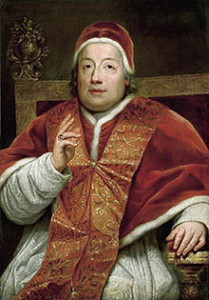 Fifth, entirely to the contrary, he explicitly says that the recently deceased Pope Clement XIII was willing to make the change, out of deference to science and scientists. This detail was in even Finocchiaro’s recounting of this conversation, but Sungenis omitted that important fact in his retelling. And it seems evident from this text that the Cardinal Prefect himself had no particular difficulty with the idea either. This would suggest that neither this prelate nor Pope Clement XIII shared Sungenis’s idiosyncratic and dogmatic stance on this question.
Fifth, entirely to the contrary, he explicitly says that the recently deceased Pope Clement XIII was willing to make the change, out of deference to science and scientists. This detail was in even Finocchiaro’s recounting of this conversation, but Sungenis omitted that important fact in his retelling. And it seems evident from this text that the Cardinal Prefect himself had no particular difficulty with the idea either. This would suggest that neither this prelate nor Pope Clement XIII shared Sungenis’s idiosyncratic and dogmatic stance on this question.
Basically, what this prelate seems to be saying is that, since the matter had also been addressed by the Congregation for the Holy Office, that office would need to intervene in some way before the Congregation of the Index could remove the works of Galileo from the Index. That’s it. And as one may see in my article “The New Geocentrism and Strict Canonical Interpretation”, that is exactly what happened, all in good order without incompetence, malfeasance, or subterfuge. Dr. Finocchiaro summarizes the Church’s official actions:
16 August 1820 The Congregation of the Holy Office, with the pope’s approval, decrees that Catholic astronomer Joseph Settele can be allowed to treat the earth’s motion as an established fact. . . .
11 September 1822 The Congregation of the Holy Office decides to allow in general the publication of books treating of the earth’s motion in accordance with modern astronomy. . . .
25 September 1822 Pope Pius VII ratifies this decision. . . . (from Finocchiaro, The Galileo Affair, p. 307; see also “The Magisterium Rules: The Debate is Over”)
And so it turns out that the statement I made in a previous essay that Sungenis’s claim regarding the requirement for another canonical trial was a mere “unproven assertion” was too mild. It turns out that his assertion is completely unsupported, even by the lone source he deploys to prop it up. What’s more, significant details are simply products of Sungenis’s imagination, made up out of whole cloth. He has cited no authoritative magisterial support, no canonical authorities whatsoever for his contention that, “If there is no legal exoneration of Galileo, then, according to canon law, Galileo and his heliocentric theory remain condemned to this very day . . .” In fact, he badly mishandled even the lone source that he used.
In my next article I cite what the real sources of the Church’s canon law have to say and will demonstrate that the Church handled this matter entirely in line with her own perennial standards of canonical interpretation. I also show that the new geocentrists handle these matters using exactly the opposite standards of those officially adopted by the Catholic Church (see “Geocentrism and Strict Canonical Interpretation”.)

www.theblanchlawfirm.com
But for now, what is the verdict on Sungenis’ Canonical Trial Canard?
Case dismissed, for lack of evidence.

